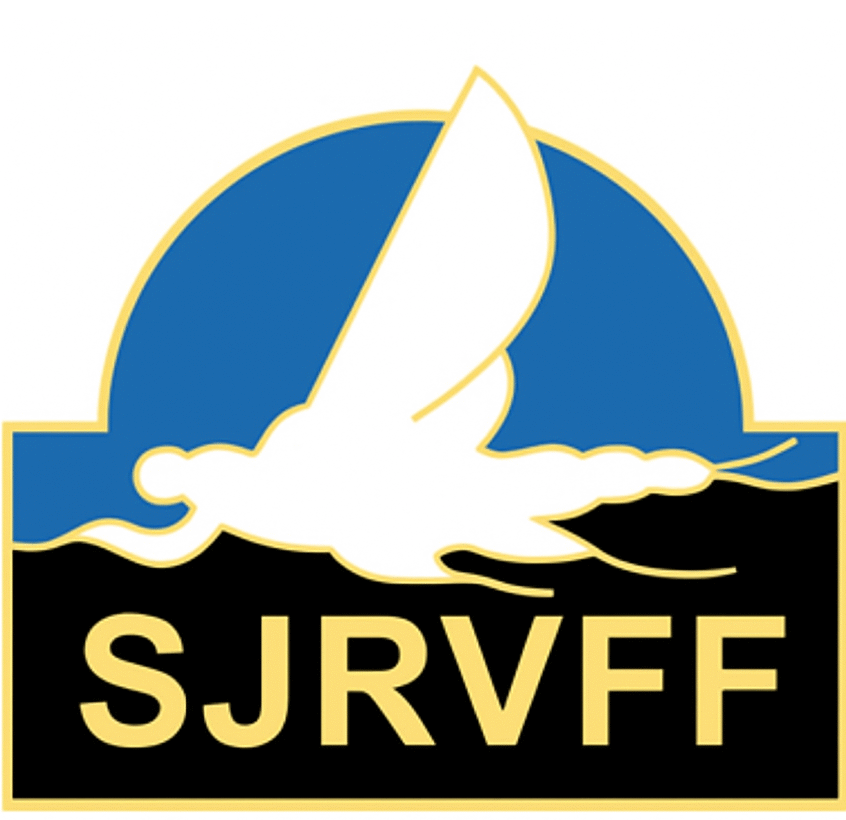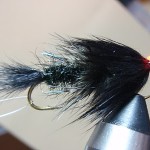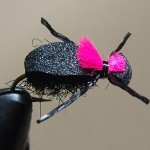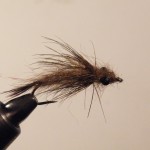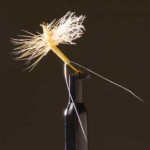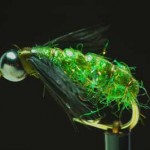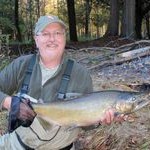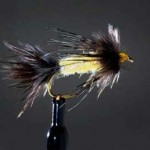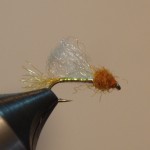
I sat down at my tying table one evening to whip up some of Dennis Potter’s Opal X Caddis for a upcoming fishing trip. I have used his Opal X Caddis pattern with great success on the Michigan and Montana streams I fish, for the past several years. When I was done I decided to try tying some Amber Iris Caddis. I had just recently purchased Craig Matthew’s and John Juracek’s “Fly Patterns of Yellowstone “ Volume 2 book, along with a sample Iris Caddis and some of their Amber Zelon dubbing. I tied several Iris Caddis per the instructions in the book, and laid them on my tying table next to the Opal X Caddis that I tied earlier. Looking at the two patterns sitting next to each other gave me the idea for the Opal Iris Caddis. I tied a few up and tried them on my area stream a few days later. The brown trout residing there gave the Opal Iris Caddis a big thumbs up!
(Click on photo to see a full size photo)
[line]
Material List
Hook: Tiemco 100 – Size #16
Thread: UTC 70D Burnt Orange
Shuck: Amber Zelon
Body: UTC Mirage Opal Tinsel (medium)
Wing: White Zelon or White EP Fibers
Head: Amber Zelon Dubbing
[line]
Tying Instructions
Tie in the amber zelon shuck about 1/3 hook shank length behind the hook eye. Wrap thread back to the bend of the hook binding down the zelon shuck, and back up to the tie in point. Trim shuck to about 1/3 hook shank length.
Tie in a length of opal tinsel at the tie in point and half hitch. Wrap opal tinsel back to hook bend and then back up to the tie in point. Bind down well, trim tinsel and half hitch. Using a rotary vise makes this step very fast and efficient. Just make sure you take care when getting close to the hook point – it will cut the tinsel and force you to start over if you are not careful!
Take a short piece of white zelon or EP fibers and fold to make a loop. Tie in the wing on the top of the hook so the loop extends to the end of the hook shank. Bind the wing down with several tight wraps and half hitch. Trim the butt fibers close and at a 45 degree angle from the hook eye.
Dub some amber zelon dubbing on your thread and dub a shaggy head covering the wing tie in. Leave enough room for a small thread head, and whip finish. The dubbed head should be kinda fat from the bulk of the wing tie in, and that is how you want it to look.
[line]
- Zelon Dubbing is available from Blue Ribbon Flies, West Yellowstone, MT
- Instead of Zelon Dubbing, any coarse or shaggy dubbing can be used
- I use size medium Opal Tinsel for #14 & #16, size small Opal Tinsel for #18 & #20
[line]
